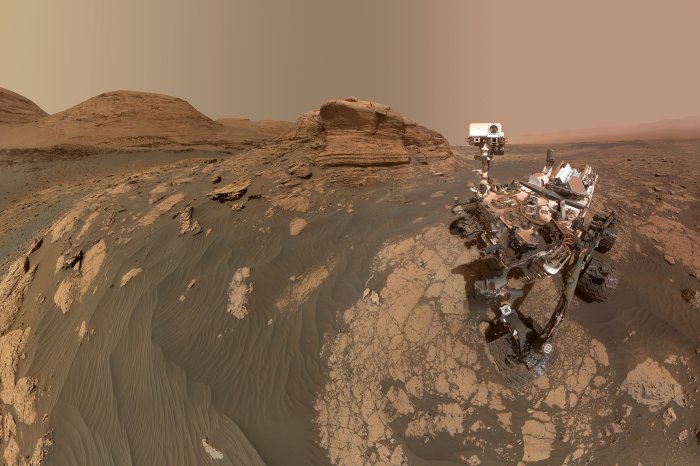1 of 3 | An illustration shows NASA's Mars rover Perseverance being lowered to the Martian surface by a jet pack, or Sky Crane, strapped to its back. Image courtesy of NASA |
License Photo
ORLANDO, Fla., Feb. 17 (UPI) -- NASA's new Mars rover, Perseverance, traveled through space to the precise location needed to land successfully Thursday at its intended crater on the Red Planet, agency controllers said.
Landing is planned at around 3:55 p.m. EST in Jezero Crater, which is an ancient lakebed the size of California's Lake Tahoe, on the planet's northern hemisphere.
"We are right where we want to be, so we have hit that bullseye," Allen Chen, a NASA lead engineer on the project, said Wednesday during a press briefing from NASA's Jet Propulsion Laboratory in Pasadena, Calif.
"That's pretty incredible considering our last maneuver [a course correction] was back in December," Chen said.
Weather at Jezero Crater appears to be favorable for a landing, Chen said. There are no signs of Mars' dreaded dust storms that can wreak havoc on machinery.
"There are some clouds that are out there ... but nothing near our general landing site," Chen said. "The skies look very clear."
At midday Wednesday, the spacecraft was 150,000 miles from the Red Planet, and picking up speed as Mars gravity pulled it closer, said Matt Wallace, deputy project manager for the mission.
The rover's spacecraft is in such good health that "Perseverance could land itself, already, without any more help from us here," Wallace said.
Still, the control room is keeping a close on the interplanetary journey, he said.
"We have to hit an entry corridor that's really just a handful of kilometers across after traveling hundreds of millions of miles to Mars," he said.
"Our batteries are now topped up at 100% state of charge, we have tested out our engines and our guidance sensors. They are ready to go."
Perseverance is NASA's fifth rover mission to Mars. Multiple landers also have explored the planet starting with Viking 1 in 1976.
Perseverance, which was launched from Florida in July, has more science equipment packed on board than any other rover, Wallace said.
Experiments include a helicopter that will fly on another planet for the first time, a chamber to create oxygen from the thin Mars atmosphere and a rock drill that will leave samples on the surface for future missions to collect for a planned return to Earth.
"We have to land safely on Mars, and that is always a challenging feat for us," Wallace said. "It is one of the most difficult maneuvers that we do in space. ... You know, almost 50% of the spacecraft that had been sent to the surface of Mars failed."
NASA’s Curiosity Mars rover used two different cameras to create this panoramic selfie, comprised of 60 images, in front of Mont Mercou, a rock outcrop that stands 20 feet tall on March 26, 2021, the 3,070th Martian day, or sol, of the mission. These were combined with 11 images taken by the Mastcam on the mast, or "head," of the rover on March 16. The hole visible to the left of the rover is where its robotic drill sampled a rock nicknamed "Nontron." The Curiosity team is nicknaming features in this part of Mars using names from the region around the village of Nontron in southwestern France. Photo courtesy of NASA/JPL-Caltech/MSSS
















